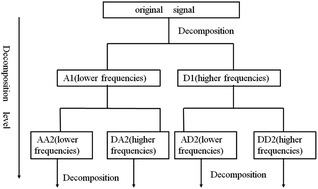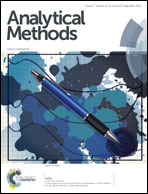Adaptive wavelet packet transform for support vector machine modeling as globally optimized by particle swarm optimization algorithm†
Abstract
Multivariate calibration algorithms and statistical methods are typically required in quantitative near infrared (NIR) spectroscopic methods to relate NIR spectral response to the chemical or physical properties of samples. Based on two different versions of particle swarm optimization (PSO) algorithms, an adaptively configured wavelet packet transform (WPT) based support vector machine (SVM) was developed and applied to quantitative near-infrared (NIR) spectral data analysis. WPT has been proved to be an effective method in extracting feature information from raw NIR spectra. It is also useful in noise suppression and data compression. SVM is famous for its function approximation ability and remarkable generalization performance. For SVM modeling on the basis of WPT, discrete PSO and continuous PSO were used synchronously to optimize the structure of a WPT tree and the parameters of SVM synergistically according to the performance of the total model. It, thus, enables an adaptive and parameter-free model construction technology for NIR spectral data analysis. The performance of the proposed Ad-WPT-SVM is investigated using two real datasets. The results of different methods are compared, indicating that the proposed method holds great potential for robust and reliable quantitative NIR spectral data analysis.


 Please wait while we load your content...
Please wait while we load your content...